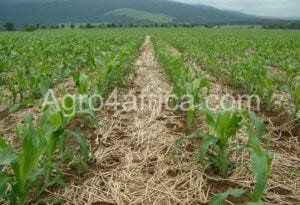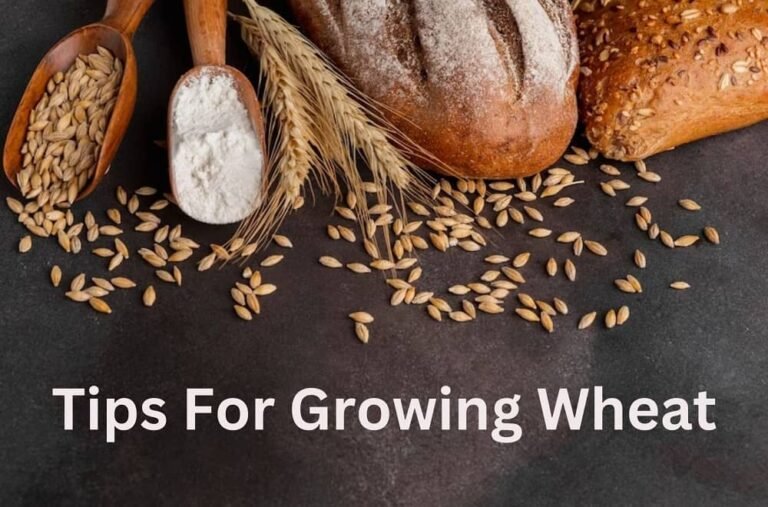Weed Control Measures in Maize Farming

This article explains 9 different methods of conrolling weed on a maize farm.
The ideas and the methods are very simple and you can apply them right away to increase the yield of maize in your farm.
In Africa, one of the main causes of low maize yield has been discovered to be inefficient weed control.
A weed refers to any plant that grows where it is not required. Weeds have a negative impact on plants.
They compete with maize plants for space, nutrients, water, sunlight, and other minerals stored in the soil.
Some weeds sponsor the development of pests and diseases on the maize farm, which reduces the profit of the maize farmer by lowering the quality and quantity of the maize.
In addition, a dense growth of weeds on the farm land makes harvesting of maize very difficult.
Maize is very sensitive to weed competition during the first 3–6 weeks after germination.
If weeds are not controlled properly during this period, it will negatively affect the growth of the maize plant and decrease its yield drastically.
Beyond this period, well planted, and healthy growing maize would choke surrounding weeds sufficiently.
METHODS OF WEED CONTROL IN MAIZE FARMING
Several methods have been adopted for controlling weeds, however, to develop an effective control method, one must understand the nature and adaptations that enable weeds to grow on farmlands.
Some weed control measures applicable to maize include:
- Land Preparation:
Land preparation not only provides good conditions for the maize plant to germinate, it also prevent early development of weeds on the farmland. Therefore, ensure to prepare the land properly to achieve a weed-free condition at the time of planting.
-
Crop Rotation:

It should be noted that different crops are affected by different types of weed. By growing the same crop every year on the same piece of land, these weeds tend to increase in number. The concept of crop rotation is to continually surprise the existing species of weeds with a different kind of crop that does not support its existence, thereby reducing the population of such weed species. A good crop rotation for maize should include crops that can suppress the growth of weeds like sweet potatoes and leguminous crops such as groundnuts, soya beans, cowpea etc.
-
Timely Planting:
Maize should be planted early enough (immediately after land preparation) so that they develop before the emergence of weeds.
-
Use of Good Seeds:
Maize seeds should be of good quality and free from weed seeds. Always get improved seeds, that are well treated, from trusted suppliers.
-
Planting Density:
Maize should be planted at recommended spacing so that the plants can cover the ground quickly, to give maximum competition to weeds.
-
Hoeing:
Small-scale farmers mostly use this method. It, however, has the disadvantage of damaging the roots of the maize plant if not done carefully.
-
Hand Weeding:
This method is used to remove weeds from narrow areas where hoe and other weeding equipment cannot reach. The disadvantage of this method is that the weeds may have caused damage to the crop through competition by the time they are old enough to be hand-pulled. Also, only a limited area can be weeded using this method.
-
Improving Soil Fertility:
Application of fertilizers or adopting any other soil fertility improvement practice will enable the maize plants to have quick and vigorous growth, which will cover the ground and suppress weeds at an early stage.
-
Chemical Application Method:
This method of weed control makes use of herbicides.
An herbicide is any chemical that has phytotoxic properties, which make it suitable for use as an agricultural chemical for the control of plant growth.
Some herbicide used by most maize farmers include butylate (sutan), primagram, alachlor (Lasso), paraquat (grammoxone), primextra, glyphosate, atrazine etc.
The use of herbicide saves time and cost of controlling weeds and it also reduces the chance of damaging plant roots.
CAUTION: Herbicides are poisonous chemicals and can be harmful to the persons who apply them. It destroys the maize plant if contact is made pollutes the environment. Some herbicides have long term residual effects which may damage crops grown on the same land the following season.
To prevent these disadvantages,
- use only recommended herbicides.
- only trained personnel with the right technical skills should be allowed to apply herbicides on the farmland.
- farmers must have a good understanding of the type, function, and purpose of the different herbicides available in the market.
Herbicides are generally safe to use if label information is followed and where the applicator has received proper training on herbicide handling.
Also, the advantages of using herbicides outweigh its disadvantages. Thus, farmers are encouraged to use herbicides where applicable and safeguard against the disadvantages of using them.
Click here to read other interesting topics about maize farming or read articles on other plants here.
Like our Facebook Page for more updates.
Please SHARE THIS POST using the share buttons on the left-hand side of this page.
Leave a comment below.







How on earth can you recommend using Paraquat which is highly poisonous and stays in the soil forever and Glyphosphate which kills bees. You should be reading up on Permaculture and the new way of Agriculture.
Thanks for the heads up. No man is an island of knowledge. I appreciate your feedback and the recommendation.
Excellent explanation, well and detailed description
Thanks, Sani.
Kudos admin good extension education..
Good info
I’m very happy to read this article about farming I love farming and I always spent alot of money on this chemicals without good results. Pls if more I formation can be given as per quantity and amount of water that will be use. Can you break the names of the chemicals that can be found in our market.
Thanks for your comment Martha, I will do the compilation soon.
Very impressive and educative
Thank you
very nice. would like to try
Very interesting.
Thanks for the useful information